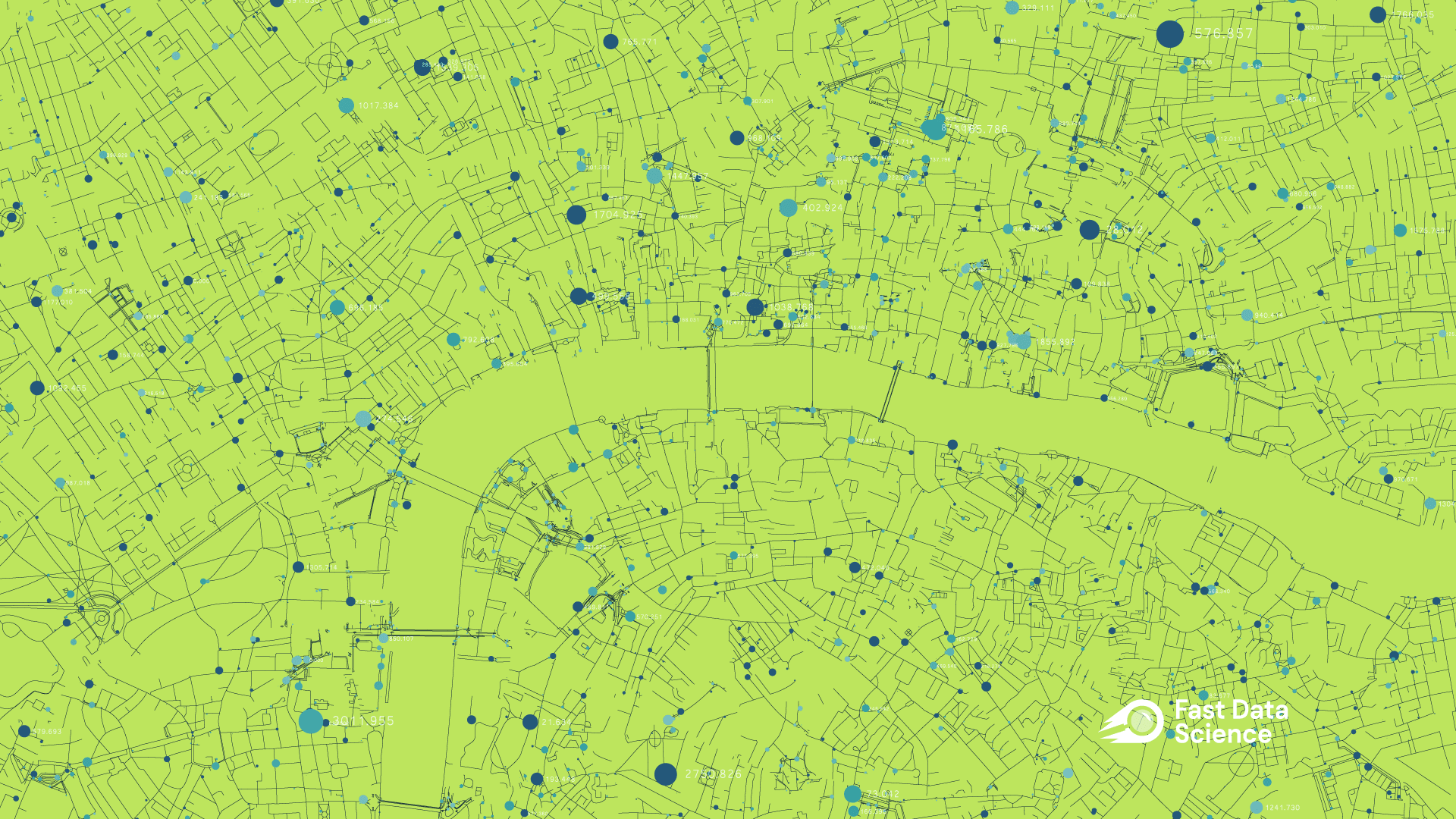
In today’s hyperconnected world, our smartphones have become inseparable companions, constantly gathering and transmitting data about our whereabouts and movements. This trove of information, often referred to as mobile traffic data, holds a wealth of insights about human behaviour within cities, offering a unique perspective on urban dynamics and patterns of movement.
Mobile foot traffic data, collected by mobile network operators, provides a granular view of the city’s population distribution and movement patterns. By analysing data on the location and movements of mobile devices, we can track the flow of people through various urban areas, revealing insights into commuting patterns, shopping habits, and even cultural preferences.
For a data science engagement with Oppizi, we have been exploring the potential of foot traffic data for offline marketing. Essentially, if you want to identify prime locations to hand out flyers, it’s good to know not just where people are, but whether they are walking, driving, or cycling.
Natural language processing
We found that with foot traffic data, we were able to find places in a city where people walk. For my home city, London, this was a real eye-opener. We’ve all seen contour maps showing the lie of a landscape. For an urban landscape there’s another kind of contour: speed of movement. If an iPhone is spotted by a mast moving at 1 m/2 westwards and an Android is moving 10 m/s northwards, the chances are that the iPhone is a pedestrian and the Android is a vehicle of some kind. If you are in offline marketing and you want to find pedestrians, mobile traffic data is the way to go.
We presented our work on AI for offline marketing with Oppizi at the B2B Marketing Expo at Excel London in November 2023.
Foot traffic data is a prime example of /big data. Even one city or country’s worth of foot traffic data can be terabytes of files, which brings its own challenge - you cannot analyse foot traffic data on a laptop but need data crunching tools such as Athena, Spark, or BigQuery. Of course, you can process the data to give summary values, e.g. the total traffic within a bin of 1km x 1km for a particular day, and this is much more manageable.
One of the most prominent applications of mobile traffic data is its ability to shed light on commuting patterns. By analyzing the movement of mobile devices during peak hours, we can identify the most congested routes, predict traffic jams, and optimise public transportation schedules.
This information is invaluable for city planners and transportation authorities, enabling them to make informed decisions that improve the efficiency and accessibility of urban transportation systems.
An ongoing debate in London is the question of Low Traffic Neighbourhoods (LTNs). Londoners disagree as to whether blocking a road to through traffic increases traffic elsewhere. The foot traffic and vehicle traffic data could be used to identify in which areas of the city people tend to walk, drive, or cycle, and conduct LTN experiments in real time.
Mobile traffic data can also be used to identify areas of high footfall and activity within the city. This information is crucial for businesses and retailers seeking to optimise their location strategies and target potential customers. By pinpointing areas with significant concentrations of mobile devices, businesses can make informed decisions about store placement, marketing campaigns, and promotional activities.
You might not have thought of this use case… but some hedge funds are even using foot traffic data to improve their assessment of a business’s prospects. Essentially, if foot traffic drops for a given business, you will see this in the mobile data before it is posted in a quarterly report.
Beyond optimising transportation and business strategies, mobile traffic data can also play a significant role in urban planning and development. By analyzing data on population density and movement patterns, city planners can identify areas with underserved populations, potential traffic congestion, and community needs. This information can be used to inform decisions about infrastructure development, public amenities placement, and community outreach programs.
Introduction to the AI roster prediction model which we developed for offline marketing company Oppizi.
In the event of emergencies or natural disasters, mobile traffic data can also be used to assist with public safety efforts. By tracking the movement of mobile devices, emergency responders can identify areas of evacuation, provide real-time updates on traffic conditions, and allocate resources efficiently. This information can help to minimize casualties and ensure the safety of the public.
Foot traffic data can help us understand customer behaviour in stores. In the world of finance, this data can also be a powerful tool. Investors and lenders can use foot traffic data to assess the health of a business. An increase in traffic to a store might indicate strong sales and potential for growth, while a decline could suggest a struggling business. This information can be used to make decisions about issuing credit or investing in a company’s stock. Some hedge funds and fintech companies use foot traffic data as an automated part of their financial models.
Foot traffic data is also valuable for real estate decisions. When evaluating a potential location for a new store or branch, lenders and businesses can analyze foot traffic patterns in the area. This data can help predict potential customer flow and inform decisions about rent prices and the viability of a location.
As mobile technology continues to evolve, the potential applications of mobile traffic data analytics are expanding exponentially. With the advent of artificial intelligence and machine learning, we can expect even more sophisticated insights into urban dynamics, enabling cities to become smarter, more efficient, and more responsive to the needs of their residents.
The ability to decode the city’s pulse through mobile traffic data represents a paradigm shift in our understanding of urban life. By harnessing this valuable resource, we can make informed decisions that enhance the livability, sustainability, and overall quality of life in our cities, shaping them into vibrant and dynamic spaces for future generations.
Ready to take the next step in your NLP journey? Connect with top employers seeking talent in natural language processing. Discover your dream job!
Find Your Dream Job
A person has recently returned from a camping trip and has a fever. Should a doctor diagnose flu or Lyme disease? Would this be any different if they had not mentioned their camping trip? Here’s how LLMs differ from human experts.

How can you predict customer churn using machine learning and AI? In an earlier blog post, I introduced the concept of customer churn. Here, I’d like to dive into customer churn prediction in more detail and show how we can easily and simply use AI to predict customer churn.

A generative AI-based legal advice tool for small businesses in distress We are pleased to announce the publication of our paper A generative AI-based legal advice tool for small businesses in distress, in collaboration with an interdisciplinary team based in the UK and Hungary.
What we can do for you